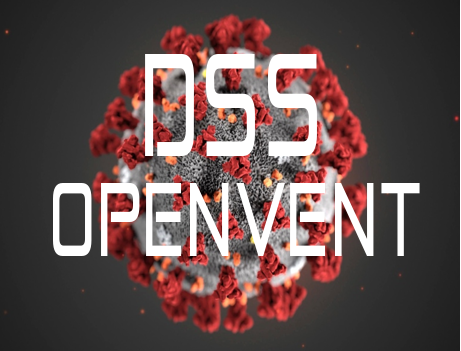
UPDATE : 3/APRIL/2020
Introduction
As the COVID-19 virus spreads throughout the globe, countries are struggling to keep up with the massive influx of patients. Victims of the virus require complex ventilation to ensure proper breathing and blood oxygenation. However, ventilators that hospitals use are in low supply and are not easily sourced and manufactured. This has resulted in a worldwide shortage of these ventilators and introduced a need for low-cost, easily sourced, and simple ventilators to ensure every COVID-19 victim can receive essential ventilation.
The Dalhousie Space Systems Lab (DSS) has launched the OpenVent Project to take on this problem. The DSS has proposed a low-cost design with an emphasis on readily sourced components, ease of set-up, and use. Comprised of a multi-disciplinary team, the DSS is more than up to this challenge.
Since the over-arching goal of the OpenVent Project is to create an easily sourced ventilator design, there is a preference for sourcing components that are readily available online. It is also preferable to select options that have high availability and low shipping times, as the short timeline on this project requires the impetuous of a quick tun-around time. Thus, all but a few parts and components for this device will be off-the-shelf components from online sources. Whatever parts and components that cannot be sourced online will be 3D printed.
As well, due to the spread of the virus, most stores, machine shops, and labs are temporarily closed. This has introduced a unique problem in that typical component sourcing and manufacturing is limited. Therefore, it is also pertinent to look to online options when sourcing components, and for 3D printing, which can be easily done by individuals, for any parts that must be manufactured.
Device Features
- Constant positive pressure for voluntarily breathing patients.
- Simulated breathing cycles for patients not voluntarily breathing.
- Oxygen concentration control, which most open-source ventilators do not utilize.
- Off the shelf components, easily sourced and purchased online.
- Connectors and accessories that can be 3D printed.
- Touch screen with custom-built user interface from which doctors and nurses can control parameters.
- Portability – a rolling stand that can be locked in place.
- Up to 60 minutes of battery power in case of disconnection.
- Control algorithms with feedback loops to ensure the inputted parameters are obtained by the system.
Current Progress
- User Interface has been developed and is currently being refined. This interface includes a tutorial for first time users and is optimized for a hospital setting, such as having visual alarms, simplified menu, and can be read from a distance of 1 meter.
- The preliminary CAD of the device is currently being completed
- A mathematical model of the breathing cycle has been established. This will be used in the control system to accurately provide breaths for the patient in the event they are not breathing voluntarily.
- Most parts have been sourced or modeled. The system is currently being verified for functionality. After this is done, components to build the prototype will be ordered. We are hoping to do this by mid next week
Initial Release – 23/March/2020
More than 15 engineer volunteers from Dalhousie Space Systems Labs got together and created the OpenVent (OV) TaskForce, designing a prototype mechanical ventilator. Due to the COVID-19 outbreak worldwide, Nova Scotia, as well as the rest of the country is anticipating a shortage of ventilators for critical patients. In the coming months, it’s predicted that Nova Scotia could see a surge in critical cases, far exceeding the capacity of the current ventilators in the province. With its unique and wide-ranging diversity of expertise in mechanical, software, chemical, and electrical engineering, DSS has put together a task-force to design a small, portable mechanical ventilator system in the next seven days. Professionally-determined specifications from Montreal General Hospital Foundation will guide the prototype’s design which is to be submitted to QEII, supporting Nova Scotia in its efforts to get ahead of the pandemic and help those who need it most. As this is the first medical device designed by the lab, the DSS is receiving expert guidance from medical professionals. Supporting their needs and the needs of medical personnel in these difficult times is the DSS’s top priority. The team is making sure the device prototypes are safe for patients, easy-to-use, and reliable. Being one of the few interdisciplinary engineering groups in Nova Scotia, the DSS is looking for anybody interested in joining the OV (OpenVent) Task-Force, especially medical professionals, ER doctors, nurses as well as professional engineers with experience in electrical, mechanical, embedded software.
If interested to participate or press inquires, please contact Dalhousie Space Systems Labs OV-Division at OpenVent@DalOrbits.ca
Please check this page for updates and design progress